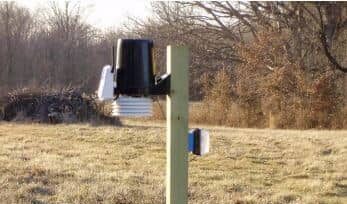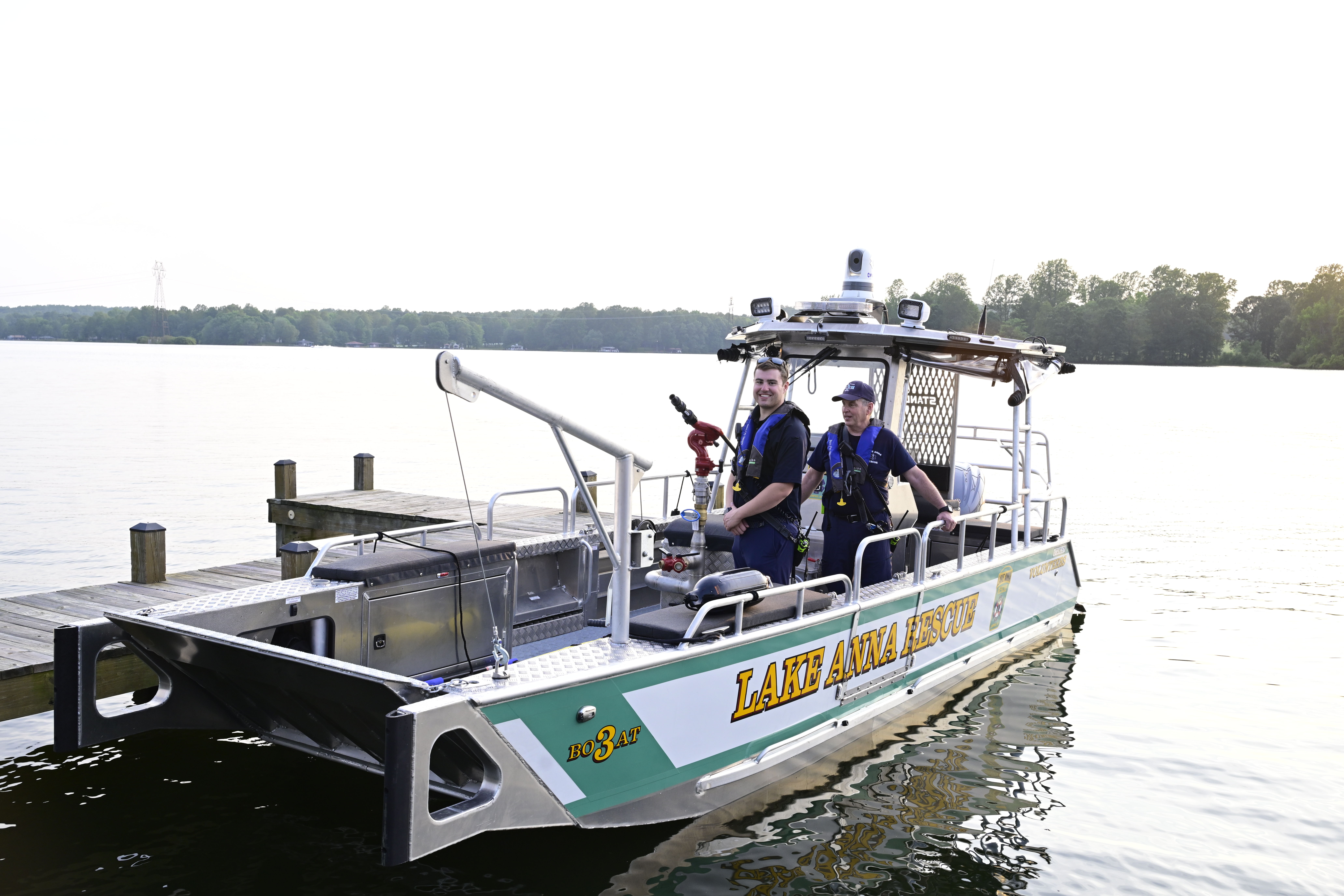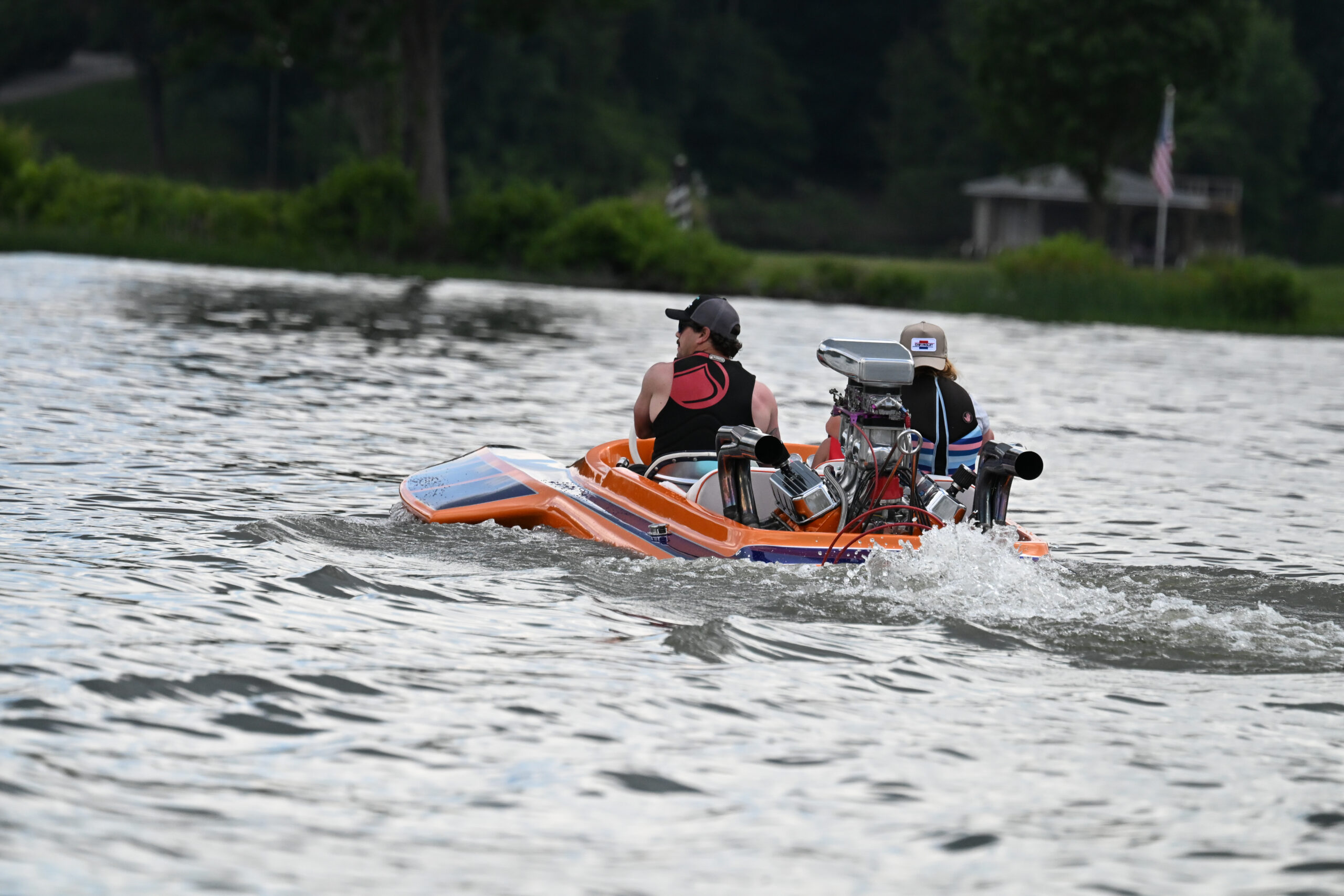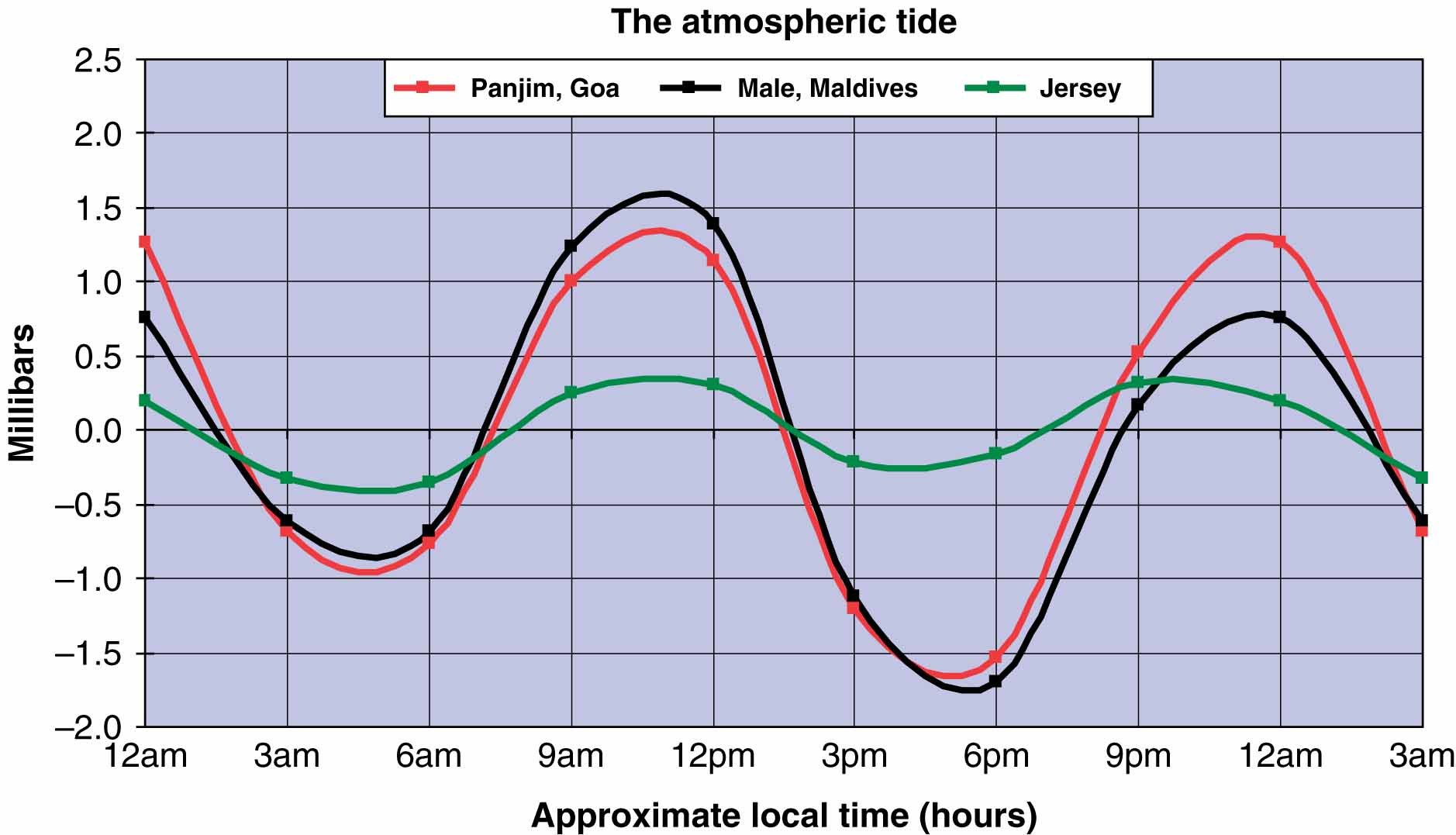
Weather instruments are the tools a meteorologist uses to sample the many different aspects of the atmosphere. Some instruments like thermometers and wind vanes are widely known, but there are others that are not. Most of our instruments date back to ancient Greece. The word “metron” means, “to measure” in Greek. That’s where we get the “meter” part of many instruments.
The thermometer is probably the only weather instrument that just about everyone has used, at one time or another. Thermometers can be as basic as one hanging on a tree in the back yard, that you can read from the kitchen window, to a very sophisticated electronic thermometer that feeds hourly temperature data into your home computer. They all serve the same purpose of telling us what the temperature is outside and plays a major role in how we dress or prepare for each day.
In the late 1600s, Galileo introduced the first thermometer, building on principles observed centuries earlier by Philo of Byzantium. His pioneering work, around 1593, laid the foundation for temperature measurement, inspiring advancements by Marin Mersenne, Otto Von Guericke, Robert Boyle, Christian Huygens, and Sir Isaac Newton. Gabriel Fahrenheit’s mercury thermometer in 1714 and Anders Celsius’s scale proposal in 1742, later reversed by Jean Pierre Christin in 1743, revolutionized temperature measurement, providing standardized frameworks still utilized in modern scientific endeavors.
Today’s thermometers employ various methods for measuring air temperature. The most common types, such as alcohol or mercury thermometers, utilize the expansion of fluid within a sealed glass tube for precise readings. Another approach involves Expansion Thermometers, consisting of two different metals fused together and wound like a spring. As temperatures change, the spring either expands or contracts, indicated by a connected needle. Thermistors, another type of thermometer, exploit changes in electrical resistance due to temperature fluctuations. These devices, made of special metals, exhibit a 4% decrease in resistance for every Celsius degree. Notably, thermistors are commonly used in backyard electronic weather stations as temperature sensors.
Precise placement is paramount for accuracy, ensuring these instruments provide reliable data for our daily lives. When siting, or positioning, weather instruments, it’s essential to select level ground, proper elevation, and a specific distance from other nearby objects.

I grew up an Air Force Brat. Traveled the country and lived in Georgia, Maine, New York, Hawaii and Oklahoma.
I fell in love with the weather in Oklahoma. My father was transferred to Tinker AFB in 1973. While in Temporary housing (a mobile home, which is the standard in Oklahoma) I experienced my first severe thunderstorm with strong winds and hail the size of baseballs. The next day I was in the base library looking up books on weather. The rest is history.
I graduated from the University of Oklahoma in 1983 with a Bachelor’s Degree in Meteorology. The first two years we took Calculus, Differential equations, Physics, Chemistry and Computer science classes with the Engineering Students. It was a grind. My degree is actually from the College of Engineering. The last 2-3 year’s focus was on Meteorology including Observational networks (Satellite, Radar, Surface), Physics, Thermodynamics, Dynamics, Synoptic, Winter Weather, Severe Weather and Climatology.
My first job out of college was with a small forecasting company in Oklahoma City. I was immediately put on TV (OETA) and Radio (WKY) as their broadcast Meteorologist. After two years in broadcasting, I decided to pursue the National Weather Service route and got a position in Toledo, OH as an intern. After a couple of years, I was promoted to a forecaster position at the Cleveland Forecast office. I quickly moved into the Weather Preparedness position and was responsible for all the preparedness activities in the state of Ohio.
In 1992 I decided to pursue other forecast opportunities and moved to the Meteorological Operations Division of the National Meteorological Center in Washington, DC. This group is now called WPC (Weather Prediction Center). There I fine-tuned my forecasting of Synoptic Weather with my focus on Heavy Convective Rainfall and Winter Storms, under the supervision of Dr. Louis Uccellini. He has written several books on East Coast Winter storms. I was promoted to a Senior Branch Forecast position during my tenure at MOD. Part of my job was to teach weather classes at COMET (Cooperative Program for Operational Meteorology, Education, and Training).
In 2012 I was given the opportunity to start up a new weather support group with the FAA (Federal Aviation Administration) in Warrenton, VA at the ATCSSC (Air Traffic Control System Command Center). The ATCSCC is where the FAA identifies solutions to air traffic inefficiencies in the NAS (National Air Space) for the CONUS (Continental United State). Weather impacts are the biggest impact on Aviation with yearly losses over 20 billion dollars. My job was to help lower these inefficiencies/costs by providing weather impact briefings and forecasts in order to keep the air planes moving as safely and efficiently as possible.
I retired in 2022 and now am running Lake Anna Weather, LLC.
Subscribe for Updates
Sponsors
latest articles
Plan Ahead for a Safe and Sober Holiday Weekend on the Water [Photo Gallery]
![Featured image for “Plan Ahead for a Safe and Sober Holiday Weekend on the Water [Photo Gallery]”](https://lakeanna.online/wp-content/uploads/2025/06/DFW-RIde-Along-8104.jpg)
Fully Community-Funded Rescue Boat Brings Life-Saving Power to the Water

[Sponsored] Holmes on Homes: Business Built on Trust, Grit and Quality
![Featured image for “[Sponsored] Holmes on Homes: Business Built on Trust, Grit and Quality”](https://lakeanna.online/wp-content/uploads/2025/06/FinalHolmes-1.jpg)
Jet Boat Community Celebrates Service and Safety at 2025 Lake Anna Invasion

Best of Lake Anna Corrections & Announcements

Barometric Tides, Explained

Weather instruments are the tools a meteorologist uses to sample the many different aspects of the atmosphere. Some instruments like thermometers and wind vanes are widely known, but there are others that are not. Most of our instruments date back to ancient Greece. The word “metron” means, “to measure” in Greek. That’s where we get the “meter” part of many instruments.
The thermometer is probably the only weather instrument that just about everyone has used, at one time or another. Thermometers can be as basic as one hanging on a tree in the back yard, that you can read from the kitchen window, to a very sophisticated electronic thermometer that feeds hourly temperature data into your home computer. They all serve the same purpose of telling us what the temperature is outside and plays a major role in how we dress or prepare for each day.
In the late 1600s, Galileo introduced the first thermometer, building on principles observed centuries earlier by Philo of Byzantium. His pioneering work, around 1593, laid the foundation for temperature measurement, inspiring advancements by Marin Mersenne, Otto Von Guericke, Robert Boyle, Christian Huygens, and Sir Isaac Newton. Gabriel Fahrenheit’s mercury thermometer in 1714 and Anders Celsius’s scale proposal in 1742, later reversed by Jean Pierre Christin in 1743, revolutionized temperature measurement, providing standardized frameworks still utilized in modern scientific endeavors.
Today’s thermometers employ various methods for measuring air temperature. The most common types, such as alcohol or mercury thermometers, utilize the expansion of fluid within a sealed glass tube for precise readings. Another approach involves Expansion Thermometers, consisting of two different metals fused together and wound like a spring. As temperatures change, the spring either expands or contracts, indicated by a connected needle. Thermistors, another type of thermometer, exploit changes in electrical resistance due to temperature fluctuations. These devices, made of special metals, exhibit a 4% decrease in resistance for every Celsius degree. Notably, thermistors are commonly used in backyard electronic weather stations as temperature sensors.
Precise placement is paramount for accuracy, ensuring these instruments provide reliable data for our daily lives. When siting, or positioning, weather instruments, it’s essential to select level ground, proper elevation, and a specific distance from other nearby objects.

I grew up an Air Force Brat. Traveled the country and lived in Georgia, Maine, New York, Hawaii and Oklahoma.
I fell in love with the weather in Oklahoma. My father was transferred to Tinker AFB in 1973. While in Temporary housing (a mobile home, which is the standard in Oklahoma) I experienced my first severe thunderstorm with strong winds and hail the size of baseballs. The next day I was in the base library looking up books on weather. The rest is history.
I graduated from the University of Oklahoma in 1983 with a Bachelor’s Degree in Meteorology. The first two years we took Calculus, Differential equations, Physics, Chemistry and Computer science classes with the Engineering Students. It was a grind. My degree is actually from the College of Engineering. The last 2-3 year’s focus was on Meteorology including Observational networks (Satellite, Radar, Surface), Physics, Thermodynamics, Dynamics, Synoptic, Winter Weather, Severe Weather and Climatology.
My first job out of college was with a small forecasting company in Oklahoma City. I was immediately put on TV (OETA) and Radio (WKY) as their broadcast Meteorologist. After two years in broadcasting, I decided to pursue the National Weather Service route and got a position in Toledo, OH as an intern. After a couple of years, I was promoted to a forecaster position at the Cleveland Forecast office. I quickly moved into the Weather Preparedness position and was responsible for all the preparedness activities in the state of Ohio.
In 1992 I decided to pursue other forecast opportunities and moved to the Meteorological Operations Division of the National Meteorological Center in Washington, DC. This group is now called WPC (Weather Prediction Center). There I fine-tuned my forecasting of Synoptic Weather with my focus on Heavy Convective Rainfall and Winter Storms, under the supervision of Dr. Louis Uccellini. He has written several books on East Coast Winter storms. I was promoted to a Senior Branch Forecast position during my tenure at MOD. Part of my job was to teach weather classes at COMET (Cooperative Program for Operational Meteorology, Education, and Training).
In 2012 I was given the opportunity to start up a new weather support group with the FAA (Federal Aviation Administration) in Warrenton, VA at the ATCSSC (Air Traffic Control System Command Center). The ATCSCC is where the FAA identifies solutions to air traffic inefficiencies in the NAS (National Air Space) for the CONUS (Continental United State). Weather impacts are the biggest impact on Aviation with yearly losses over 20 billion dollars. My job was to help lower these inefficiencies/costs by providing weather impact briefings and forecasts in order to keep the air planes moving as safely and efficiently as possible.
I retired in 2022 and now am running Lake Anna Weather, LLC.
Subscribe for Updates
Sponsors
latest articles
Plan Ahead for a Safe and Sober Holiday Weekend on the Water [Photo Gallery]
![Featured image for “Plan Ahead for a Safe and Sober Holiday Weekend on the Water [Photo Gallery]”](https://lakeanna.online/wp-content/uploads/2025/06/DFW-RIde-Along-8104.jpg)
Fully Community-Funded Rescue Boat Brings Life-Saving Power to the Water

[Sponsored] Holmes on Homes: Business Built on Trust, Grit and Quality
![Featured image for “[Sponsored] Holmes on Homes: Business Built on Trust, Grit and Quality”](https://lakeanna.online/wp-content/uploads/2025/06/FinalHolmes-1.jpg)
Jet Boat Community Celebrates Service and Safety at 2025 Lake Anna Invasion

Best of Lake Anna Corrections & Announcements

Barometric Tides, Explained


Belmont Ruritan Clubs Award $26,000 in Scholarships to Local Seniors
Article By Jen Bailey

Exclusive Golf Excursions for Cutalong Members
Article By Jen Bailey






